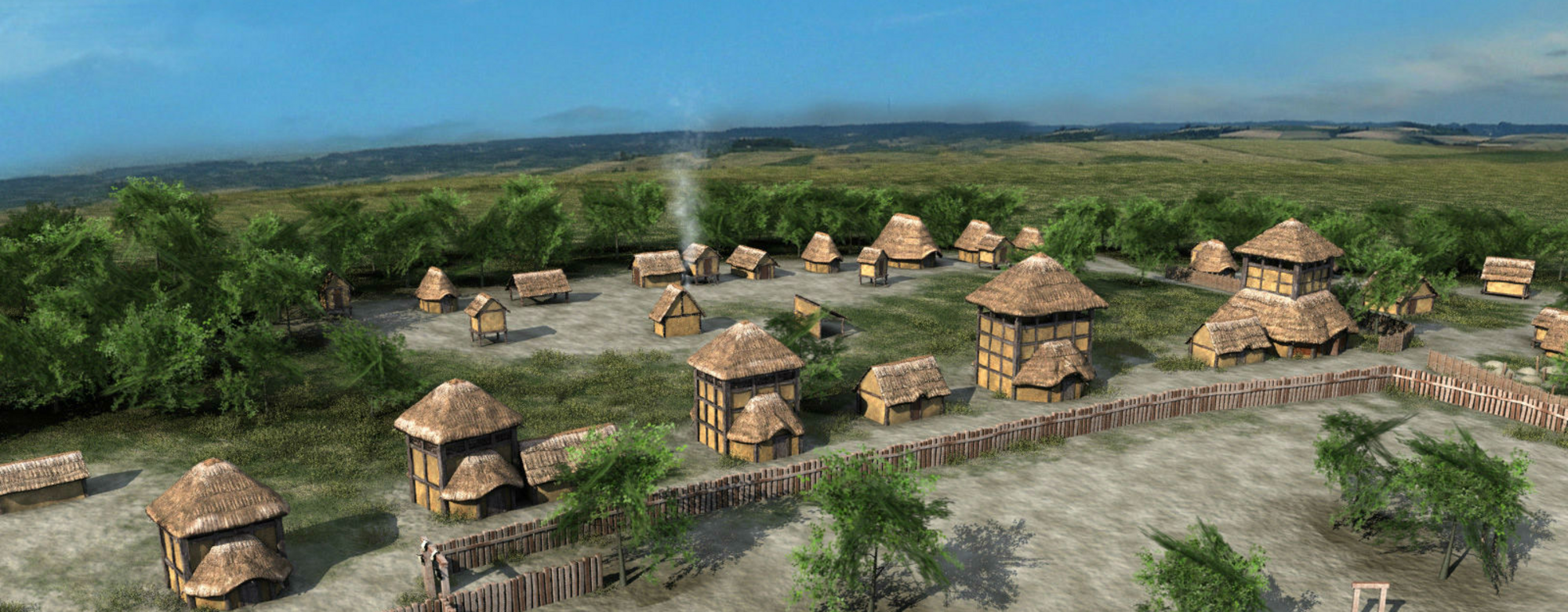
- Home
- The Gallic village
- Establishing the village
- Courtyard A: livestock farmers
The precise layout and divisions of the settlement, inspired by religious practice, was also a response to social criteria. The northeast "courtyard" was conspicuous for the imposing dimensions of the houses, the number of outbuildings, the existence of rubbish pits containing mainly butchery waste, on average the remains of three cattle and two horses, and the very few grain stores. The large community grain store also displayed a bull's skull, and contained four ox skulls, a number not seen in the central enclosure. A marten skin, represented by the right front paw and the face, and a bronze strainer thumbrest in a post hole are a few elements revealing the "wealth" of the occupants of this sector. The livestock farmers' residential area must be viewed based on these very specific features.




